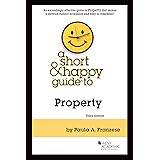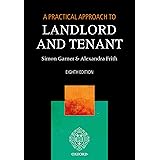Did you know that investing in German real estate could potentially save you tens of thousands in taxes? Up to
€50,000 in tax deductions over 10 years is possible for buy-to-let properties. The video above highlights some critical aspects of German property investment. We delve deeper into these remarkable tax benefits and strategic opportunities. Specifically, we focus on the advantages of renting out properties in Germany.
Unlocking Tax Benefits: Buy-to-Let vs. Owner-Occupied Property
German tax laws offer distinct advantages for rental properties. Buying a home to live in provides no interest write-offs. This means no direct tax benefit for an owner-occupier. In contrast, buying to rent out opens significant tax deductions.
You earn rental income when you rent a property. The Finanzamt (German tax authority) taxes this income. However, you can deduct various costs. These deductions reduce your overall taxable rental income. This difference is a key driver for many German investors.
Deducting Interest Costs for Rental Properties
One primary deduction is interest paid on your mortgage. Imagine you pay €10,000 in interest per year. This entire amount is deductible from your rental income. If your rental income was €120,000, it effectively becomes €110,000 for tax purposes. This significantly lowers your tax burden.
It’s a straightforward benefit for investors. Owner-occupiers do not get this advantage. This makes buy-to-let a more appealing financial strategy. It effectively lowers the real cost of financing your investment.
Understanding Depreciation (AfA) in German Real Estate
Depreciation, or “Absetzung für Abnutzung” (AfA) in German, is another powerful tool. It acknowledges that buildings lose value over time. This concept applies even if the market value increases. It’s a “book value” reduction, not a real cash outflow. You can deduct this artificial expense from your taxable income.
Crucially, only the building’s value depreciates. Land value does not depreciate under German tax law. For a property valued at €500,000, assuming 2% depreciation, you can deduct €10,000 annually. This deduction applies to your overall income, not just rental income. This makes it particularly attractive for high earners.
Standard and Special Depreciation Rates
Standard depreciation rates vary. Older buildings typically have a 2% annual rate. Newer properties, specifically new builds, enjoy a 3% rate. This higher rate reflects government incentives. It encourages modern, energy-efficient construction.
A more significant benefit comes from “Special Depreciation” (Sonder-AfA). This program aims to boost new, affordable housing construction. It allows a generous 5% depreciation per year. This applies for the first four years of the property’s life. The property must meet certain criteria. Specifically, its construction costs must be below €5,200 per square meter. This rule prevents luxury developments from benefiting.
The Sonder-AfA offers substantial tax savings. A property benefiting from 5% depreciation could see deductions of €25,000 annually. For someone in a 40% tax bracket, this translates to €10,000 in cash savings. This incentive is a direct stimulus for private investment. It helps address Germany’s housing needs.
Strategic Locations: The Rise of Satellite Towns for German Property Investment
Affordable new builds often emerge in “satellite towns.” These towns are typically within an hour’s commute of major cities. Examples include Zossen, near Berlin, about 45 minutes away. These locations offer lower purchase prices. Yet, they provide access to urban job markets and amenities.
Investments in satellite towns show significant appreciation potential. Population growth often drives this. Proximity to major cities is also a key factor. Developers are active in these areas. This creates a supply of new, affordable housing. These areas present excellent long-term growth prospects for German property investors.
For example, a project in Zossen sold out in three months. This highlights the demand. Investors are keenly aware of the tax advantages. They also see the growth potential in these expanding regions. Such areas are ideal for those seeking strong returns on their German buy-to-let investments.
Navigating Risks in German Buy-to-Let Investment
While the benefits are clear, risks exist. One significant risk involves the developer. Construction delays or non-completion can cause issues. Due diligence on the developer’s track record is crucial. Ensuring robust contracts is also vital for German real estate investment.
Another concern is tenant quality. Germany has strong tenant rights. This protects renters significantly. However, a “sub-optimal tenant” can still create problems. Non-payment of rent, for instance, can lead to lengthy eviction processes. Thorough tenant screening is therefore essential to mitigate these risks. Professional property management can also help navigate tenant relations and legalities. Careful planning and risk assessment are vital for successful German buy-to-let ventures.









